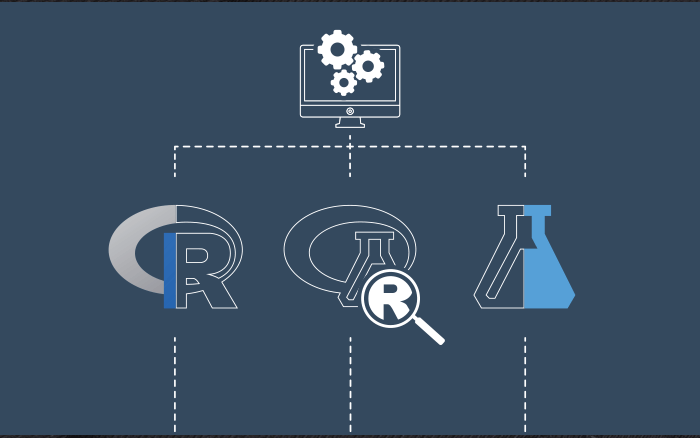
(R Example for Citizen Data Scientist & Business Analyst)
R Program to Print the Fibonacci Sequence
In this example, you’ll learn to print the Fibonacci sequence using a while loop.
A Fibonacci sequence is the integer sequence of
0, 1, 1, 2, 3, 5, 8....
The first two terms are 0 and 1. All other terms are obtained by adding the preceding two terms.
This means to say the nth term is the sum of (n-1)th and (n-2)th term.
Example: Print Fibonacci Sequence
# take input from the user
nterms = as.integer(readline(prompt="How many terms? "))
# first two terms
n1 = 0
n2 = 1
count = 2
# check if the number of terms is valid
if(nterms <= 0) {
print("Plese enter a positive integer")
} else {
if(nterms == 1) {
print("Fibonacci sequence:")
print(n1)
} else {
print("Fibonacci sequence:")
print(n1)
print(n2)
while(count < nterms) {
nth = n1 + n2
print(nth)
# update values
n1 = n2
n2 = nth
count = count + 1
}
}
}
How many terms? 7 [1] "Fibonacci sequence:" [1] 0 [1] 1 [1] 1 [1] 2 [1] 3 [1] 5 [1] 8
Here, we ask the user for the number of terms in the sequence. We initialize the first term to 0 and the seconde term to 1.
If the number of terms is more than 2, we use a while loop to find the next term in the sequence.
Inside the while loop, we first print the first two terms n1 and n2 respectively. Then, we calculate the next term nth by adding the last two terms and print it.
Now, we update the values of n1 and n2 to the last two terms, i.e. the term in n2 to n1 and the term we just calculated nth to n2.
This goes on until the number of terms reaches the nterms entered by the user.
Python Examples for Beginners: Python Code to Display Fibonacci Sequence Using Recursion
R Examples for Beginners – R Program to Print the Fibonacci Sequence
Free Machine Learning & Data Science Coding Tutorials in Python & R for Beginners. Subscribe @ Western Australian Center for Applied Machine Learning & Data Science.
Western Australian Center for Applied Machine Learning & Data Science – Membership
Sign up to get end-to-end “Learn By Coding” example.
Introduction to Applied Machine Learning & Data Science for Beginners, Business Analysts, Students, Researchers and Freelancers with Python & R Codes @ Western Australian Center for Applied Machine Learning & Data Science (WACAMLDS) !!!
Latest end-to-end Learn by Coding Projects (Jupyter Notebooks) in Python and R:
Applied Statistics with R for Beginners and Business Professionals
Data Science and Machine Learning Projects in Python: Tabular Data Analytics
Data Science and Machine Learning Projects in R: Tabular Data Analytics
Python Machine Learning & Data Science Recipes: Learn by Coding
Disclaimer: The information and code presented within this recipe/tutorial is only for educational and coaching purposes for beginners and developers. Anyone can practice and apply the recipe/tutorial presented here, but the reader is taking full responsibility for his/her actions. The author (content curator) of this recipe (code / program) has made every effort to ensure the accuracy of the information was correct at time of publication. The author (content curator) does not assume and hereby disclaims any liability to any party for any loss, damage, or disruption caused by errors or omissions, whether such errors or omissions result from accident, negligence, or any other cause. The information presented here could also be found in public knowledge domains.